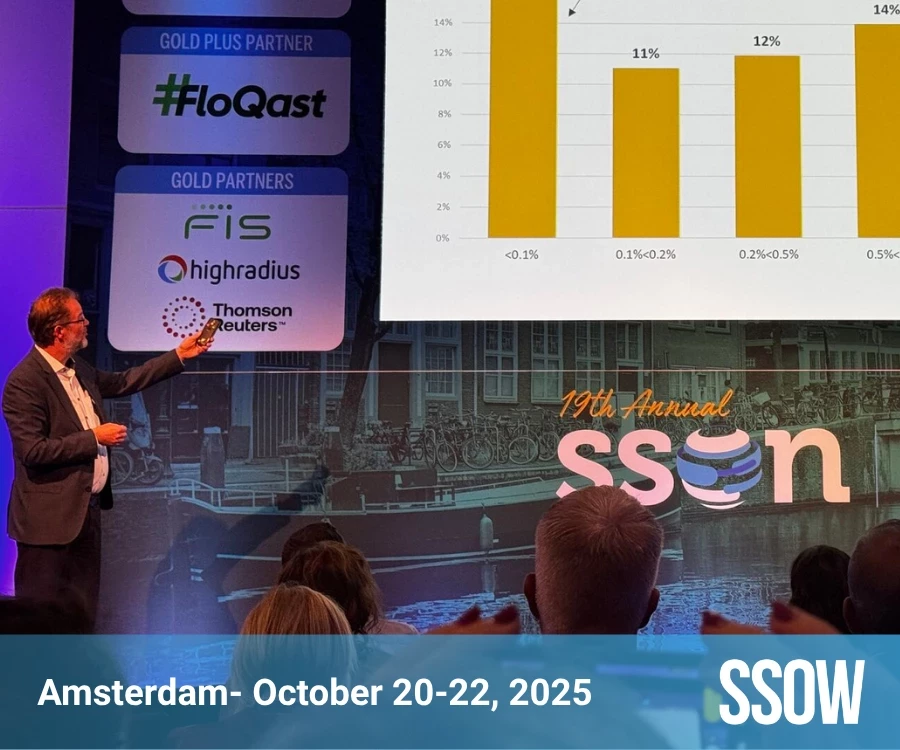
The Trends Shaping GBS Location in 2025: Ask the Expert
Agentic AI, Tariffs, the Back-to-Office debate, there are a myriad of trends shaping the business world in 2025. But how are they impacting the Global Business Services space? Are they world-defining or something that will pass us by? At the Shared Services and Outsourcing Week Europe 2025, SSON spoke to some of the world’s best Global Business Services leaders about their take on big business trends.
This time, we sat down with Tom Bangemann, Head of Data Development and Research for SSON Research and Analytics, to understand how global trends are reshaping the GBS location landscape, and what’s coming next.
With rising costs, global tariffs, and increasing socio-economic risks, many organisations are reassessing their global operating models in 2025. To what extent should location strategy remain a priority for GBS, and what factors make it particularly relevant today?
The location topic has been of interest in recent years. Bangemann states “over the past three decades, there has been a trend to consolidate to as few locations as possible.” GBS organizations would aim to have one centre per region, as Bangemann shares, “so something for the Americas, something in Europe, something in Asia, plus a couple of specialists centres such as one in China to serve the Chinese business …ending up with five, six, seven centres globally as a footprint and this was done by most companies, who were happy with the setup and done with this topic.” However, in the last couple of years, the location debate has reopened, and this trend for consolidation has been reversed. Bangemann highlights the reasons for this as being in multiple locations “spreads your risk and provides access to diverse labor markets, plus you can run small centers today more efficiently than you used to be able to as technology today is more scalable and the cost of running operations such as this has become lower. So, it makes a lot of sense to look at your location footprint again. According to SSON R&A, most companies are now doing that; they are at least examining if their current location footprint makes sense.”
What factors should GBS leaders consider when choosing their next location? Is it all about cost, or are there other areas to consider?
Whilst cost remains an ever-present top priority, Bangemann elaborates that it is no longer the only deciding factor. Due to the “turbulent environment we are currently in,” Bangemann states that GBS organizations are not “necessarily selecting the lowest cost locations, but they are balancing that against stability, security, and mitigating risk factors.” This cost vs stability weighting means that organizations are willing to pay more in exchange for locations that offer more political stability.
Which locations are worth considering in 2025?
Although countries such as India, Poland, and the Philippines have established their value and are still leading with “most activity, most FTEs and centres” in this space (apart from the US which has even more centers but which is not an offshore location), Bangemann confirms that new location considerations are emerging, sharing that “we’re not having a problem with limited options, it’s rather that it's getting confusing in terms of who’s offering what and why the location is better suited for a specific company.” “If we take LATAM, the big three are Mexico, Colombia and Costa Rica and those are still popular. However, Uruguay, Chile, and Peru are climbing up in popularity despite having slightly higher labor costs.” Bangemann further shares that if you look at Eastern Europe, Poland is still the most popular location, but any country in Central and Eastern Europe is attracting more attention than 5-10 years ago, and in Western Europe “Portugal and Spain” are becoming more popular selections. “Africa is also emerging as a real choice, it used to be focused on only two mature locations, Egypt, and South Africa, but now there are about ten other locations which are active. It is currently very basic but will certainly increase in the next few years. In Asia it is all the countries we know e.g. Philippines, India which continue to grow, alongside rising players like Vietnam, Indonesia and Malaysia.”
In your opinion, how are factors such as AI and automation affecting location decisions?
While some may assume AI would reduce the need for geographic strategy, Bangemann disagrees. He states that in theory, if we “automate everything, locations become irrelevant in a way,” but in reality, “people still make their location selection based on people in those locations, their skills, capabilities, cost levels, and the fit of the location into their organization setup and footprint.” Bangemann acknowledges that the main effect of AI and technology is that there are more locations selected now where there is a broad skills-pool. Bangemann concludes that this shift is a natural consequence of the demand for AI implementation; companies are simply going where the talent is.
To gain more excellent insights from our SSO Network, don't miss out on our upcoming Shared Services and Outsourcing Week Autumn.




























